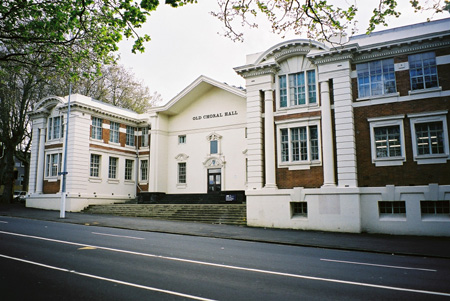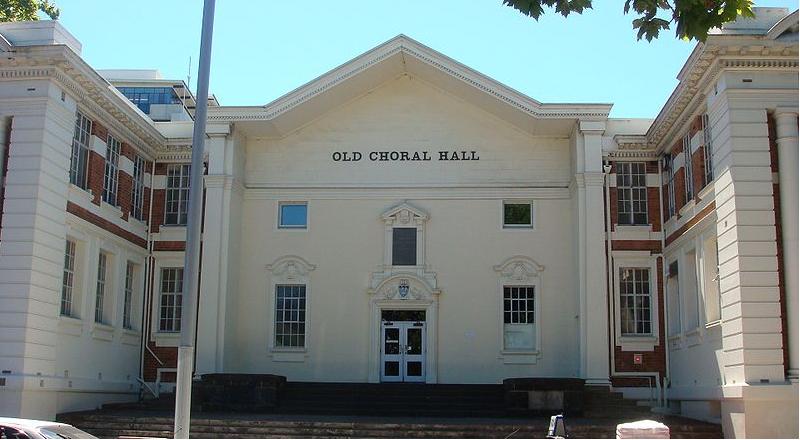The former Choral Hall has strong connections with the development of civic and cultural life in colonial Auckland, being built in 1872. It was erected in the grounds of the former Government House by the Auckland Choral Society, which was the first to perform the works of Beethoven, Handel, Haydn, Mozart and others in New Zealand. The brick and timber building replaced two earlier halls on the site that had burnt down, and was designed in a neo-classical style by Edward Mahoney. Mahoney went on to erect other prestigious buildings in the town, including St Patrick's Cathedral and the Auckland Customhouse. The core of the original structure still survives and was one of the largest buildings in nineteenth-century Auckland. It sat 1,100 people and for nearly forty years acted as a concert chamber and main public hall for the community. Large gatherings ranged from religious meetings to the Industrial and Mining Exhibition of 1898. A ceremonial banquet held for King Tawhiao (?-1894) in 1882 was particularly notable as it marked an improved relationship between Pakeha and Kingitanga, or Kingite, Maori. Such events were transferred to the Auckland Town Hall, after it was opened in 1911. Located close to the University of Auckland, the Choral Hall has had a particularly long association with academic life. In 1877 it saw the graduation ceremony of Kate Edger (1857-1935), the first woman to gain a BA from a university in the British Empire. The building witnessed the inaugural ceremony of the University College of Auckland in 1883, and began to be used for teaching from 1888. Purchased by the University shortly before the First World War, two elegant Baroque wings were added as a science department in 1919 and 1925. The second of these was designed by the American architect Roy Lippincott, who oversaw the construction of a nearby Arts Building in the following year (see 'Old Arts Building, University of Auckland'). The additions reflected a commitment by the university to a site in the centre of town, consciously allowing working people easier access to higher education. The building continues to be used for teaching, although modified as educational demands have changed. The original hall has been subdivided into separate lecture theatres, while a mail room was added to the rear in 1982-1983. The building is of national and international significance for its associations with the rise of women's education, both in New Zealand and the British Empire. It has important connections with Kate Edger, who took a prominent role in early women's movements including the campaign for suffrage. The building is valuable for its associations with the development of classical music in New Zealand, and other cultural activities. It was important to social life in colonial Auckland, offering an opportunity for people to meet. The building is connected with important personalities and events in New Zealand history, such as those involved in conciliation between Maori and Pakeha in the 1880s. It is significant for its long association with education and the development of the University of Auckland. The existing structure demonstrates changes in the organisation and philosophy of higher education over more than 100 years. It incorporates the earliest purpose-built university architecture in the city, which reflects the importance of science as an educational topic in the early 1900s. The building has additional significance for its associations with the architects Edward Mahoney and Roy Lippincott, who were prominent practitioners in the town. Its value is enhanced by its proximity to related historic buildings in the urban landscape, including the former Government House and Old Arts Building of the University of Auckland.


Location
List Entry Information
Overview
Detailed List Entry
Status
Listed
List Entry Status
Historic Place Category 1
Access
Private/No Public Access
List Number
4474
Date Entered
6th June 1990
Date of Effect
6th June 1990
City/District Council
Auckland Council
Region
Auckland Council
Legal description
Allot 3 Sec 6 City of Auckland
Related listings
Stay up to date with Heritage this month
